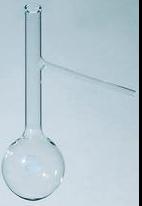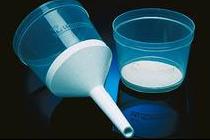The prairie view a&m university environmental health & safety department
Texas A&M University-Corpus Christi
Environmental, Health & Safety Department
Policy and Procedures
for Using Controlled Substances in
Non-Clinical Educational and Research Activities
This internal policy regulates the use of controlled substances, controlled substance
analogues, chemical precursors and certain chemical laboratory apparatus used in non-clinical
educational training and research activities in the Texas A&M University-Corpus Christi
Research, Physical and Environmental Science (PENS) and Life Sciences (LSCI)
Departments.
The Texas Department of Public Safety (DPS) and the Texas Higher Education Coordinating
Board (THECB) signed a Memorandum of Understanding (MOU) that establishes
responsibilities on institutions of higher education for implementing and maintaining a
program for reporting information concerning controlled substances, controlled substance
analogues, chemical precursors and chemical laboratory apparatus used in educational
training and research activities. This document defines the requirements and procedures
necessary for compliance with the MOU by the E,H&S.
II.
Controlled Substances Definition
Controlled Substance is defined as a substance listed in the United States Drug Enforcement Administration (DEA) Schedules I through V1 or Penalty Group 1 through 4 of the Health and Safety Code, Chapter 481, the Texas Controlled Substance Act2. This definition also includes controlled substance analogues with a chemical structure similar to that of a listed controlled substance and chemical precursors that may be used as a primary component in manufacturing a controlled substance. The Controlled Substance Acts also cover "Chemical Laboratory Apparatus" which is defined as "… any equipment designed, made, or adapted to manufacture a controlled substance or a controlled substance analogue." (please see Attachment A for precursors substance & chemical laboratory apparatus)
1 Code of Federal Regulations Title 21- Food and Drugs Chapter 13 – Drug Abuse Prevention and control: 2 Texas Health and Safety code Subtitle C. Substance Abuse Regulation and Crimes Chapter 481. Texas Controlled Substances Act: http:www.capitol.state.tx.us/statutes/hs.toc.htm Health and Safety Code Chapter 481 http://www.capitol.state.tx.us/statutes/docs/HS/content/htm/hs.006.00.000481.00.htm
Responsible Party
Individual faculty members are responsible for aspects of ordering, storing, recording and
using controlled substances in their research program. If the controlled substances are to be
used in conjunction with the activities in an organized research unit (e.g. centers) outside the
operation of a specific sponsored project, the Director of the unit is responsible. If the
controlled substances are to be used in a teaching activity, the Head of the department
through which the academic course is offered is the responsible party. The responsible party
individual must obtain and keep current federal Drug Enforcement Administration (DEA) and
Texas Department of Public (DPS) registration, unless exempted by law. Registrants are
responsible for procuring, maintaining security, keeping records, and disposing of controlled
substances in accordance with federal and state regulations and rules.
The Principal Investigator (PI) or Responsible Party (RP) shall send to the Environmental,
Health & Safety Department (E,H&S) an updated list of all controlled substances license
holders, the types of controlled substances each responsible party utilizes, and the laboratory
where these substances are used and stored.
IV.
Site Operational Security
A. Specific locations (e.g., laboratory or locked storage area assigned to the responsible
party) should be established where controlled substances are utilized and stored. They must be stored behind a minimum of three (3) locks: in a locked cabinet, in a room that is locked after normal business hours, and in a building that is locked after hours.
B. Access to rooms and locked storage areas containing controlled substances must be
restricted to authorized personnel.
C. Positions for personnel having access to controlled substances should be designated as
security sensitive and appropriate pre-employment criminal history checks must be performed.
D. When controlled substances are received, they should be immediately checked for
completeness with the shipping invoice, logged in an inventory record book and placed in the proper storage site.
Inventory and Reporting of Loss
A. Procedures must be established by each responsible party controlled substance license
holder to monitor their use of controlled substances. The record book must include a complete listing of all controlled substances used along with a running inventory of their usage (please see Attachment B for example forms). Purchase records are to be maintained according to State and Federal requirements, and are subject to DPS audit.
B. Authorized personnel must be alert and attentive to the disappearance of any controlled
substances. Any losses must be reported to the appropriate Principal Investigator or Responsible Party, TAMU-CC's Police Department, Center for Research Department Director and the Environmental, Health & Safety Director upon the discovery of the loss.
C. A full and complete inventory of all controlled substances must be completed every year
by the responsible party and a list of the substances used that year reported to the E,H&S Department.
Disposal
Disposal of controlled substances must be in accordance with federal and state regulations.
The Environmental, Health & Safety Department (E,H&S) will notify each controlled substance license holder of the controlled substance policy on an annual basis. Each license holder will also be required to annually submit to the office of Environmental, Health & Safety Department a list of controlled substances they used that year and an updated list of all personnel authorized to use controlled substances. Office of Responsibility: Environmental, Health & Safety Department (E,H&S)
ATTACHMENT A
The following is a list of the controlled items including precursor chemicals, laboratory
apparatus and glassware whose purchase, use, transfer and disposal must be monitored.
Precursor Chemicals
1. Anthranilic Acid
7. Ergotamine tartrate
13. Norpseudoephedrine
2. Barbituric Acid
14. Phenylacetic acid
3. Controlled Substance Analogue
9. Ethyl malonate
15. Phenylpropanolamine
4. D-Lysergic Acid (LSD)
5. Diethyl malonate
11. Malonic acid
17. Pseudoephedrine
12. N-Acetyl anthranilic acid
* Controlled substance analogue" is a substance that is substantially similar in chemical structure
to that of a controlled substance or has central nervous system activity that is substantially similar to, or greater than that of a controlled substance.
Laboratory Apparatus
1. Adapter tubes
7. Filter funnels, Buchner funnels, and separatory funnels
8. Flask heaters
3. Distilling apparatus
9. Heating mantles
4. Distilling flasks
10. Soxhlet extractors
5. Encapsulating machines
11. Tableting machines
6. Erlenmeyer flasks, two-necked flasks ,
12. Three-necked flasks
Flasks, thermometer flasks, & filtering flasks
13. Transformers 14. Vacuum dryers
Note: The MOU does not establish any de minimis quantities of precursor chemicals nor
sizes of glassware or equipment.
Prescription and non-prescription medicinal formulation are exempted.
ATTACHMENT B
E,H&S Controlled Substances Information Sheet
The following procedures and requirements are necessary for applicable university units to
comply with the TAMUCC Controlled Substance Policy.
Maintain Purchase Order Records.
Do Not Sell, Furnish or Transfer any controlled items (including surplus property) to a person or entity not holding a DPS permit or waiver, unless the recipient is specifically exempted by law or rule. Every sale, furnishing or transferring of a controlled item leaving the immediate campus (where the specific controlled item is stored and inventoried) should be reported (by the 15th day of the next month) to the DPS on a Nar-22 Form.
Report to TAMU-CC's Police Department promptly upon discovery of a readily unacceptable discrepancy, pilferage or theft of a controlled item. The Police Department is responsible for forwarding the report to DPS.
a. The Executive Vice President for Finance & Administration, The Chief
of Police and E,H&S Director has primary responsibility for all matters associated with safety, security and law enforcement at TAMUCC.
b. Maintain locked storage for controlled precursor chemicals and
controlled substance analogues. Strictly limit access to these chemicals.
c. Limit access to storerooms containing listed items to authorized
personnel only. Lock storage areas when unattended.
d. All doors into any room in which controlled items are used must be
locked when authorized personnel are not present.
Notification and Awareness.
a. Departments and units affected by this Policy should post notices (this
page) in prominent location(s), to inform personnel of the Policy and of the steps necessary for compliance.
b. Encourage personnel to be alert and attentive to the disappearance of
controlled items and to report such losses as appropriate.
Assistance from the Texas Department of Public Safety: Upon request, the DPS will provide technical advice to the institution and will assist in investigating losses, etc. covered by the Controlled Substance Act.
If there are any questions concerning these documents, please contact Roy D. Coons , Director, Environmental, Health & Safety at (361) 825-5555,or contact the University Police Department at (361) 825-4444 for assistance with security and police matters.
Inventory Sheet
Principle Investigator (PI) Date:
or Responsible Party (RP) Date:
Completed By: _ Date:
PI Signature: _
Precursor Chemicals
Number & Size of
Storage Location
Anthranilic acid
D-Lysergic acid (LSD)
Ergotamine tartrate
N-Acetyl anthranilic
Norpseudoephedrine
Phenylacetic acid
Phenylpropanolamine
* Controlled substance analogue" is a substance that is substantially similar in
chemical structure to that of a controlled substance or has central nervous system activity that is substantially similar to, or greater than that of a controlled substance.








Regulated Laboratory Apparatus
Laboratory
Number Present
Location (Room#)
Apparatus
1. Adapter Tubes
1. Buchner Funnel
2. Seperatory Funnel
2. Soxhlet extractors
2. Distilling Flask
1. Erlenmeyer 2. Filtering
1. Vacuum Filters
1. Flask Heaters
2. Heating Mantles
Flask 2. Three Neck Flask
Source: http://safety.tamucc.edu/uploads/Site/Controlled_Substances_MOU.pdf
Beneficial Use of Winston Craig, PhD, RD Professor of Nutrition Andrews University Herb and Spices Herbs (leaves) basil, cilantro, dill, oregano, parsley, sage, thyme Spices (aromatic parts of plants) pepper, cumin, garlic, cloves, caraway, ginger, cinnamon, turmeric, cardamom
BUSSINES NEWSLETTER AGOSTO 2013 SEXTA RESOLUCIÓN DE MODIFICACIONES A LAS REGLAS DE CARÁCTER CARÁCTER GENERAL EN Reglas de carácter general PARA 2012 Y SUS ANEXOS GLOSARIO DE DEFINICIONES Y en materia de comercio ACRÓNIMOS, 1, 10, 21 Y 22. Programa para impulsar la General en Materia de competitividad en los sec- Comercio Exterior para tores industriales (PROIND)







